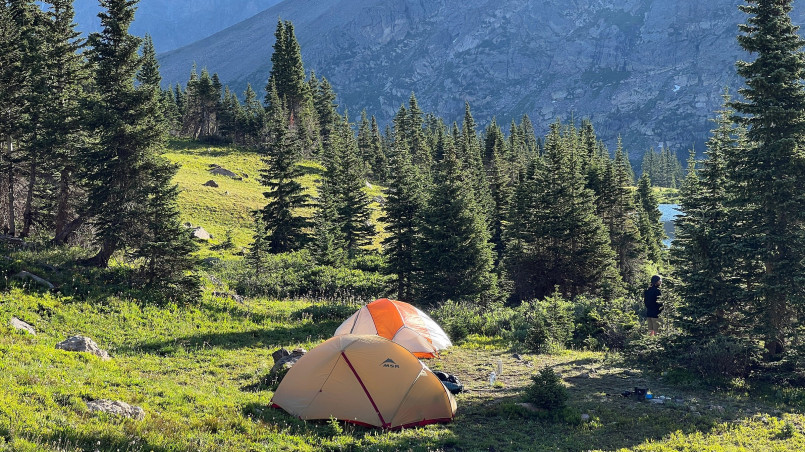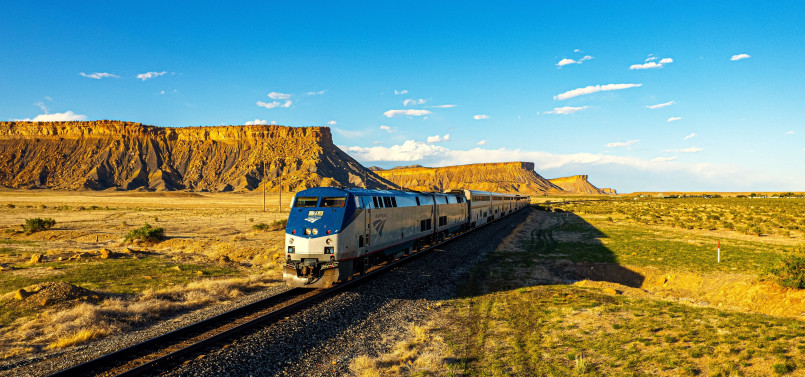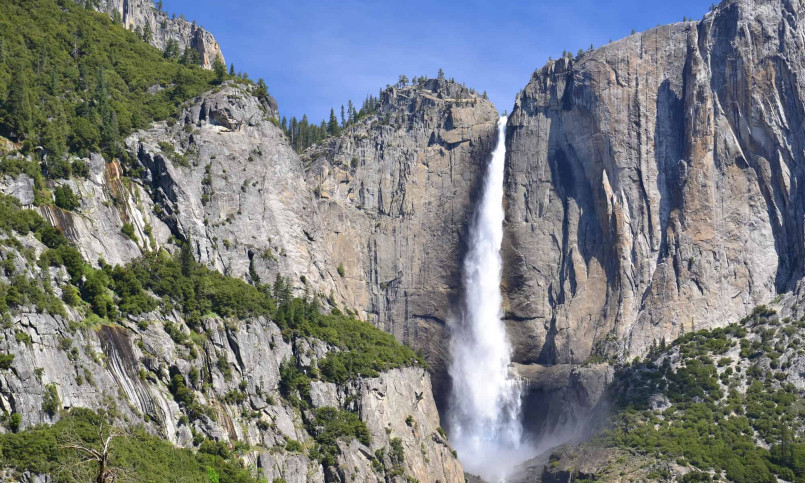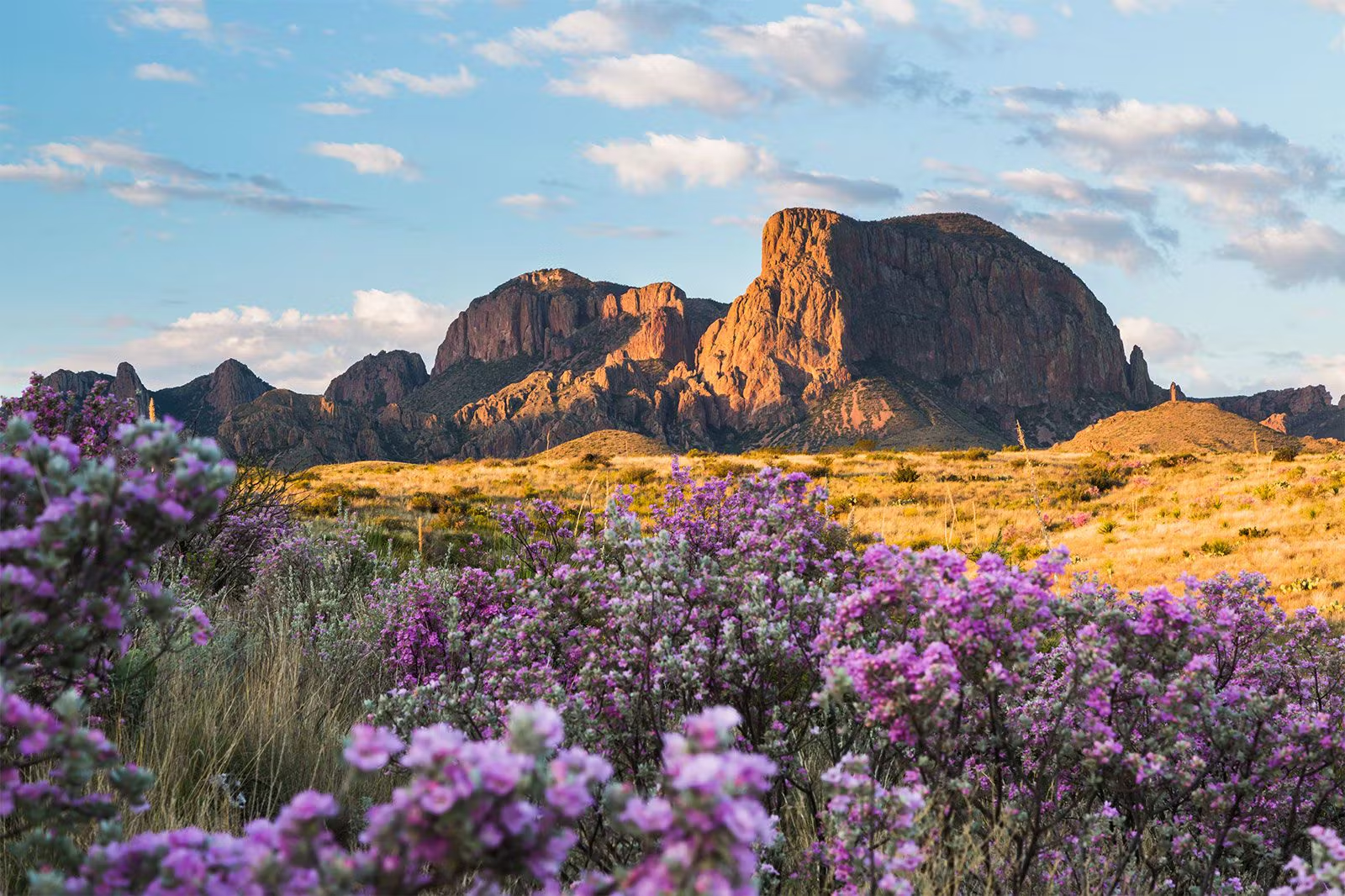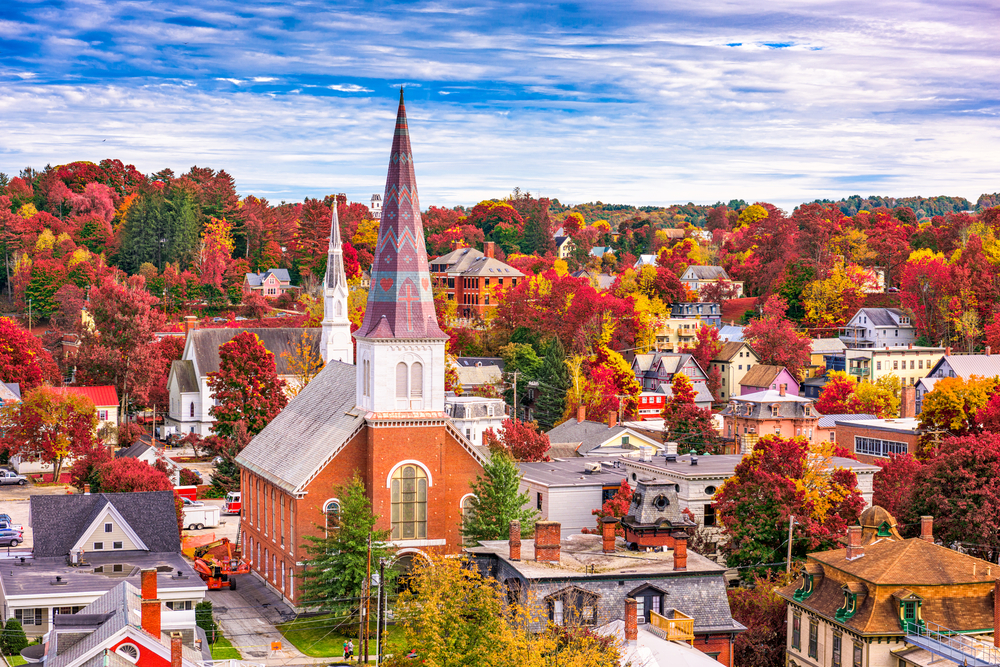America's national parks offer some of the most spectacular hiking opportunities in the world. From the towering peaks of the Rockies to the deep canyons of the Southwest, these protected landscapes provide hikers with unforgettable trails and vistas that showcase nature at its most awe-inspiring.
America's national park system offers some of the most diverse and breathtaking hiking opportunities in the world. From challenging summit climbs to gentle meadow strolls, these protected lands provide access to pristine wilderness and natural wonders that have inspired generations of outdoor enthusiasts. Whether you're an experienced backpacker or a casual day hiker, the national parks feature trails that will leave you with lasting memories and a deep appreciation for America's natural heritage.
The following parks represent the premier hiking destinations within the National Park Service, each offering unique landscapes, ecosystems, and trail experiences. While many parks have excellent hiking opportunities, these fifteen stand out for their exceptional trail systems, iconic vistas, and diversity of hiking experiences.
Yosemite National Park
California's crown jewel offers hikers an unmatched combination of towering granite monoliths, thundering waterfalls, and ancient sequoia groves. The park's 750+ miles of trails provide options for every ability level.
The iconic Half Dome hike is a challenging 14-16 mile round trip with 4,800 feet of elevation gain, requiring a permit and use of cables to reach the summit. For a more accessible experience, the Mist Trail to Vernal and Nevada Falls offers spectacular waterfall views, while the Valley Loop Trail provides a relatively flat tour of Yosemite Valley's highlights.
For wilderness experience, Tuolumne Meadows in the park's high country offers exceptional alpine hiking with fewer crowds than the valley.
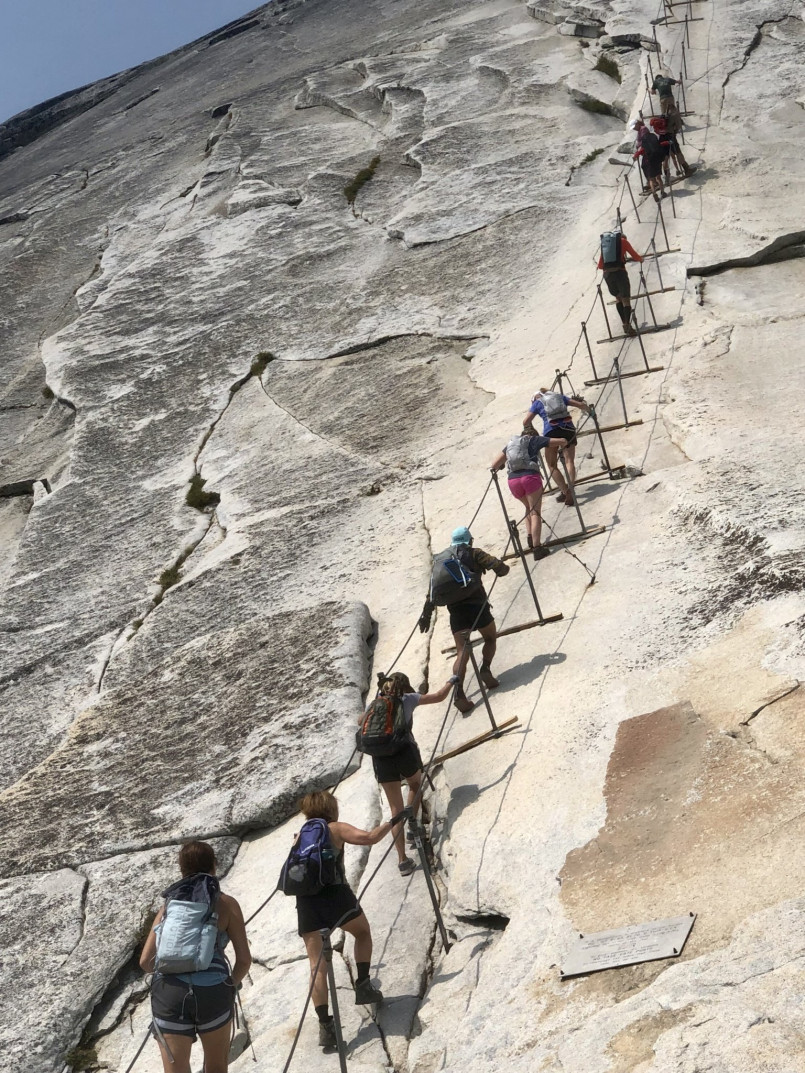
Grand Canyon National Park
Hiking into the Grand Canyon offers a journey through time as you descend through nearly two billion years of Earth's geological history. The park's trails range from rim strolls to challenging inner-canyon expeditions.
The Bright Angel Trail and South Kaibab Trail are the park's main corridors into the canyon from the South Rim. Both are strenuous day hikes or backpacking routes, with Bright Angel offering more shade and water sources. Remember the park ranger's advice: "Going down is optional, coming up is mandatory."
For a less crowded experience, the North Rim provides excellent hiking options like the North Kaibab Trail and the more moderate Widforss Trail with spectacular forest and canyon views.
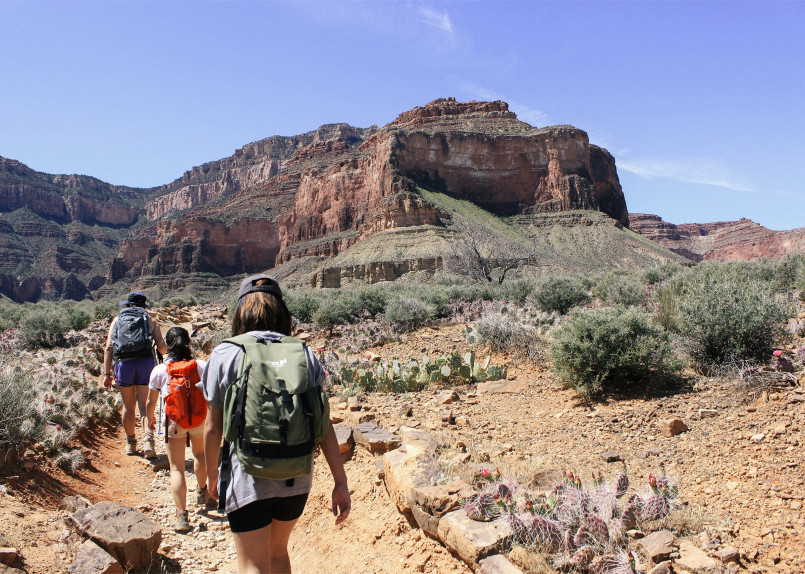
Zion National Park
Utah's first national park features dramatic sandstone cliffs and narrow slot canyons that create some of the most unique hiking experiences in the national park system.
The Angels Landing trail is world-famous for its thrilling chain section along a narrow fin of rock with 1,000-foot dropoffs on either side. The Narrows offers a different adventure as hikers wade through the Virgin River between towering canyon walls.
For less crowded alternatives, consider the Observation Point trail, which actually looks down on Angels Landing, or the peaceful Watchman Trail for sunset views of the valley.
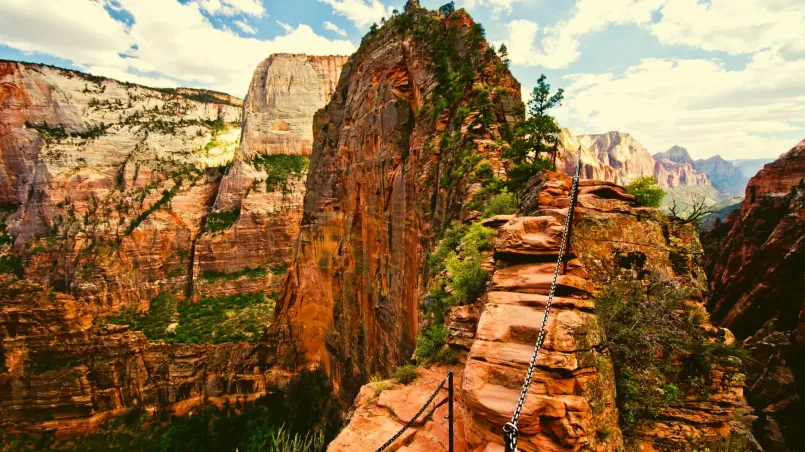
Rocky Mountain National Park
With more than 300 miles of hiking trails and 76 peaks over 12,000 feet, Rocky Mountain National Park is a high-altitude paradise for hikers. The park's diverse trail system spans everything from accessible lake loops to challenging summit bids.
The Sky Pond trail (9.8 miles round trip) showcases alpine lakes, waterfalls, and towering peaks. For a classic summit experience, Longs Peak (14,259 feet) offers a challenging 16-mile round trip that requires an early start and good weather conditions.
For wildlife viewing opportunities, the trails around Moraine Park and Glacier Basin offer good chances to spot elk, especially during the fall rut season.
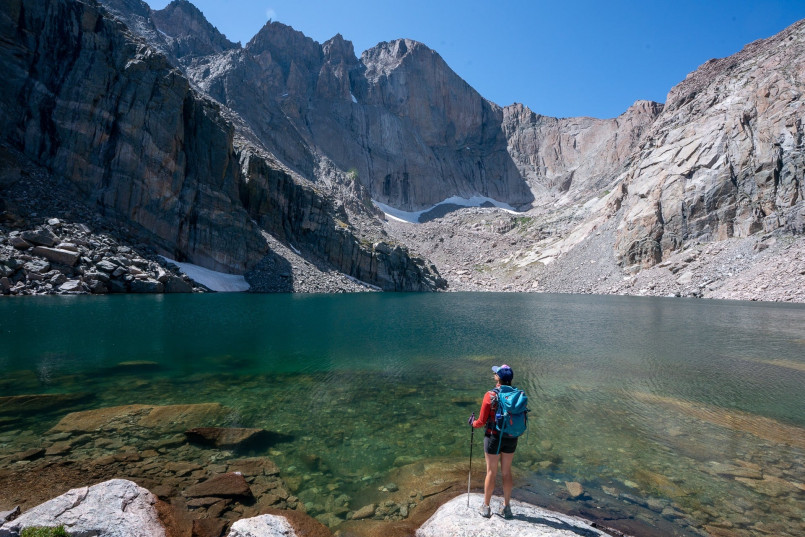
Glacier National Park
Known as the "Crown of the Continent," Glacier offers spectacular alpine scenery, wildlife encounters, and over 700 miles of trails. The park's rugged landscape features massive mountains, pristine lakes, and remnant glaciers.
The Highline Trail is perhaps the park's most celebrated hike, following the Continental Divide with breathtaking views and wildlife sightings. For a challenging day hike, Grinnell Glacier provides close-up views of one of the park's remaining glaciers.
The Hidden Lake Overlook from Logan Pass is a more moderate option that still delivers stunning alpine scenery and frequent mountain goat sightings.
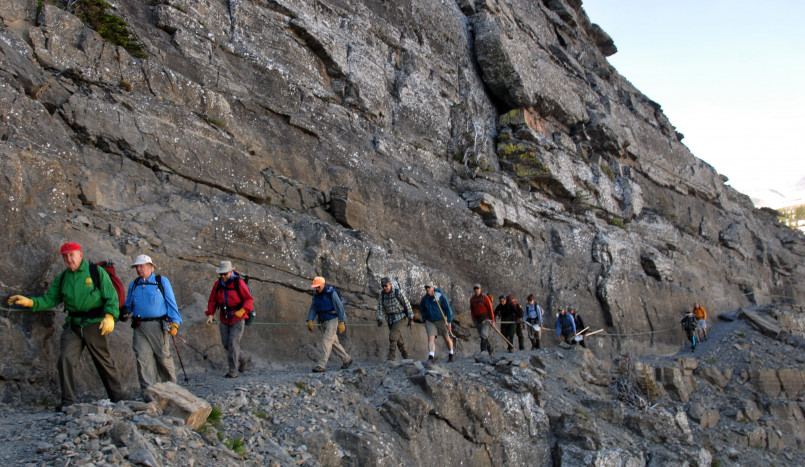
Olympic National Park
Olympic National Park offers unparalleled ecological diversity with three distinct ecosystems: temperate rainforest, wild Pacific coastline, and alpine highlands. This diversity creates unique hiking opportunities not found elsewhere.
In the Hoh Rain Forest, trails like the Hall of Mosses showcase ancient trees draped in moss and ferns in one of America's few temperate rainforests. Along the coast, Rialto Beach and Second Beach trails lead to tide pools and sea stacks.
In the mountains, Hurricane Ridge offers alpine meadow hikes with panoramic views of the Olympic Mountains and potential glimpses of mountain goats and black bears.
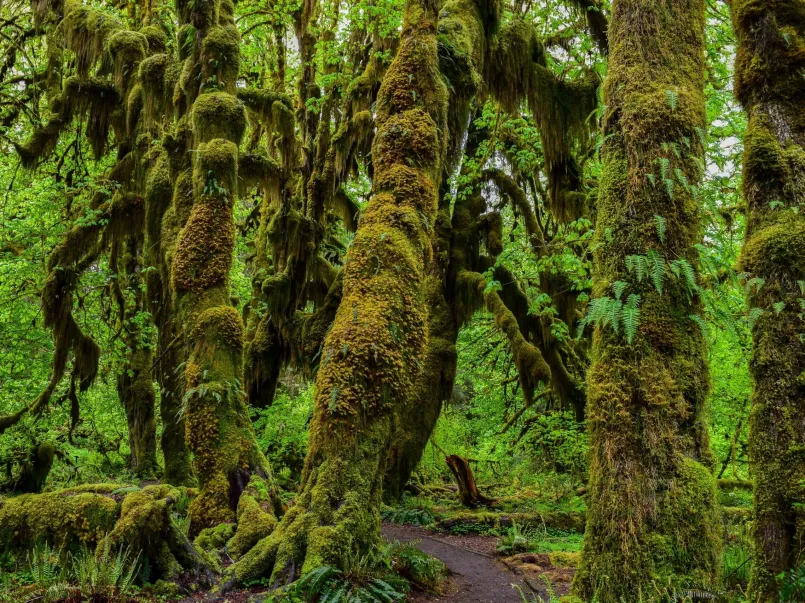
Grand Teton National Park
The jagged Teton Range rises dramatically from the valley floor in this Wyoming park, creating one of America's most photogenic landscapes and excellent hiking opportunities from easy lakeshore strolls to challenging mountain climbs.
The Cascade Canyon Trail is a park highlight, offering close-up views of the Tetons and often wildlife sightings including moose and bears. For a challenging experience, Paintbrush Divide and Static Peak offer strenuous but rewarding summit hikes.
The String Lake Loop provides a more accessible 3.8-mile hike with beautiful lake and mountain views perfect for families.
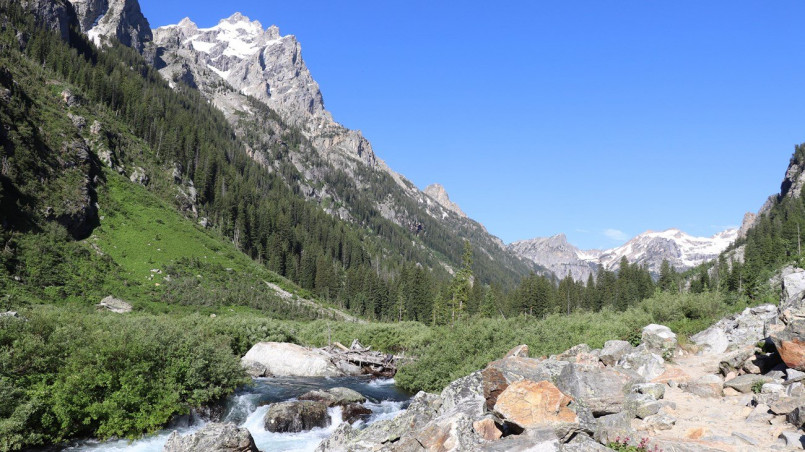
Sequoia & Kings Canyon National Parks
These adjacent parks in California's Sierra Nevada mountains protect both the world's largest trees and some of the most rugged alpine terrain in the Lower 48 states.
In Sequoia, the Congress Trail loops through impressive groves of massive sequoias, including the General Sherman Tree, the largest tree on Earth by volume. For a challenging hike with spectacular views, the Alta Peak Trail climbs to 11,204 feet with panoramic vistas of the Great Western Divide.
In Kings Canyon, the Mist Falls Trail follows the South Fork of the Kings River to a powerful waterfall, while the Rae Lakes Loop is one of the most popular multi-day backpacking routes in the Sierra.
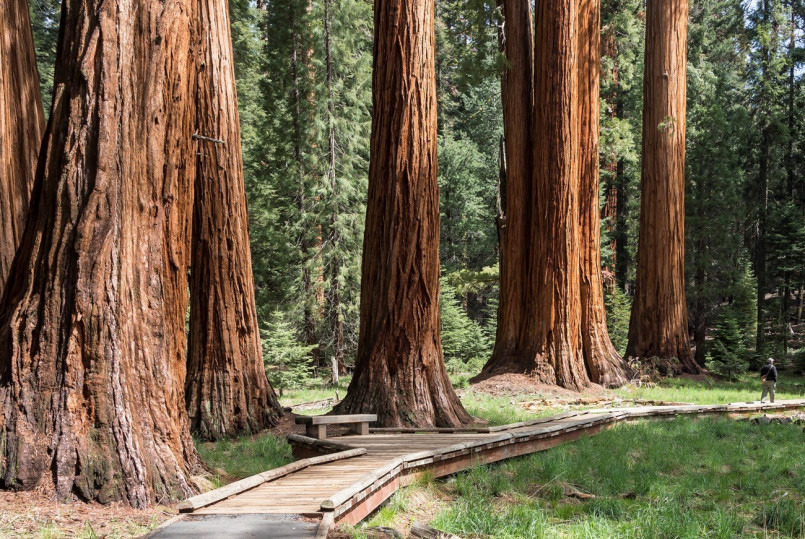
Mount Rainier National Park
Dominated by the 14,410-foot glacier-clad volcano, Mount Rainier National Park offers spectacular wildflower meadows and alpine scenery within a two-hour drive of Seattle.
The Skyline Trail at Paradise is perhaps the park's signature hike, a 5.5-mile loop through subalpine meadows with stunning views of Mount Rainier and, on clear days, other Cascade volcanoes. The Sunrise area offers several excellent trails including the moderate Sourdough Ridge Trail with panoramic mountain views.
For a wilderness experience, the Northern Loop trail offers a challenging multi-day backpacking adventure through diverse terrain and ecosystems.
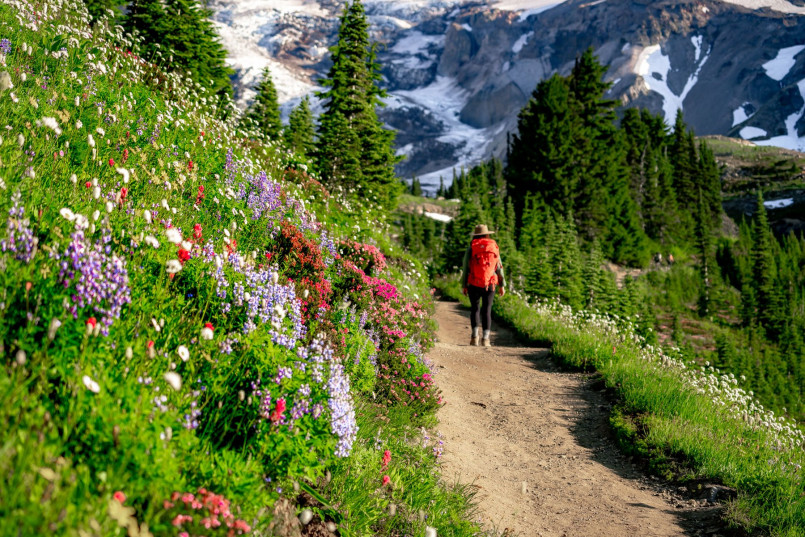
Great Smoky Mountains National Park
America's most visited national park spans the border between North Carolina and Tennessee and protects one of the oldest mountain ranges in the world. The park offers over 800 miles of trails through lush forests, historic settlements, and mountain summits.
The Alum Cave Trail to Mount LeConte is a park favorite, climbing through unique rock formations to panoramic views. For a taste of Appalachian history, the Roaring Fork Motor Nature Trail area offers several shorter hikes to waterfalls and historic buildings.
A section of the legendary Appalachian Trail runs through the park, including Clingmans Dome, the highest point in the park at 6,643 feet.
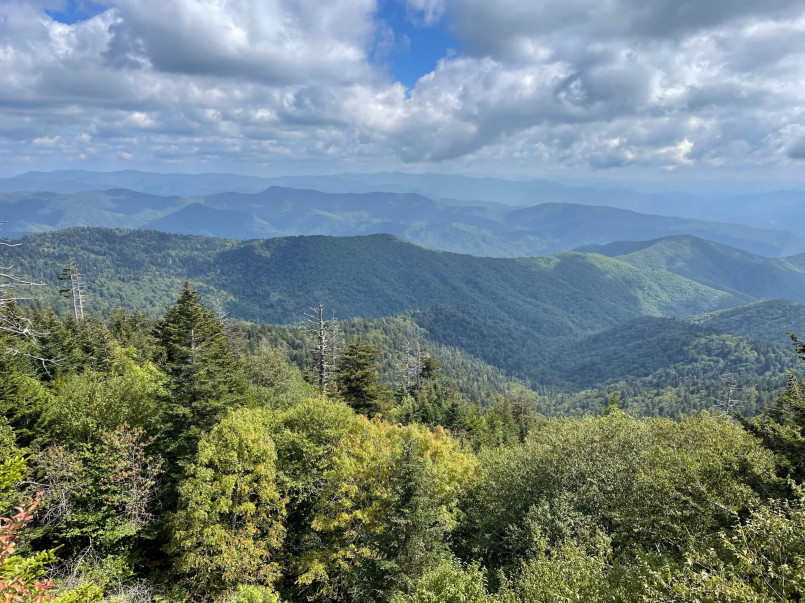
Bryce Canyon National Park
Though smaller than many parks on this list, Bryce Canyon offers some of the most otherworldly landscapes for hikers with its famous hoodoos-irregularly eroded spires of red rock that create a natural amphitheater.
The Queens Garden/Navajo Loop combination is considered the best short hike in the park, taking hikers down among the hoodoos for an up-close experience of these unique formations. For a longer adventure, the Fairyland Loop (8 miles) provides similar scenery with fewer crowds.
For an unforgettable experience, hike the Peek-A-Boo Loop during winter when snow contrasts dramatically with the red rock formations.
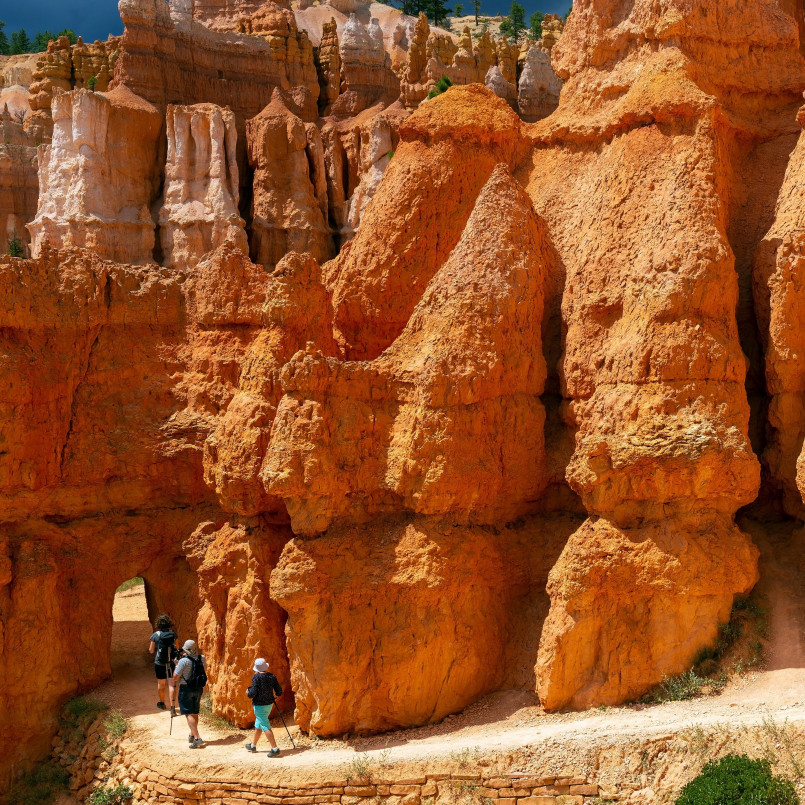
Acadia National Park
Located primarily on Maine's Mount Desert Island, Acadia combines rocky Atlantic coastline with forested mountains to create a unique hiking destination in the Northeast.
The park's iron rung routes like the Beehive and Precipice Trails offer thrilling climbs using built-in iron rungs and ladders. For a classic Acadia experience, hike to the summit of Cadillac Mountain, the first place to see sunrise in the United States for much of the year.
The Ocean Path follows the dramatic coastline from Sand Beach to Otter Cliff, passing Thunder Hole where waves create thunderous sounds in the right conditions.
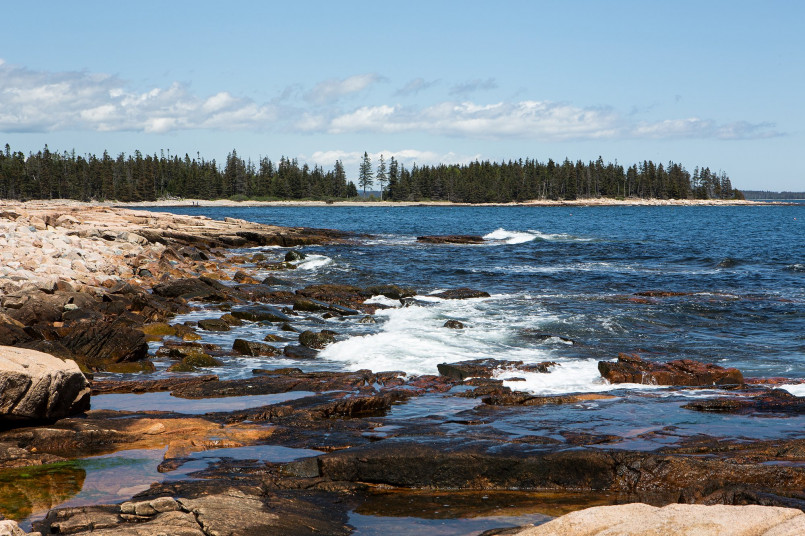
Joshua Tree National Park
Where the Mojave and Colorado deserts meet, Joshua Tree offers a surreal landscape of twisted trees, massive boulder formations, and wide-open desert vistas that create a distinctive hiking environment.
The Hidden Valley nature trail is an accessible one-mile loop through a rock-enclosed valley once used by cattle rustlers. For a more challenging experience, the Lost Palm Oasis trail (7.2 miles round trip) leads to a secluded palm oasis in a remote canyon.
The Ryan Mountain trail offers a moderate 3-mile round trip climb to panoramic desert views from its 5,458-foot summit.
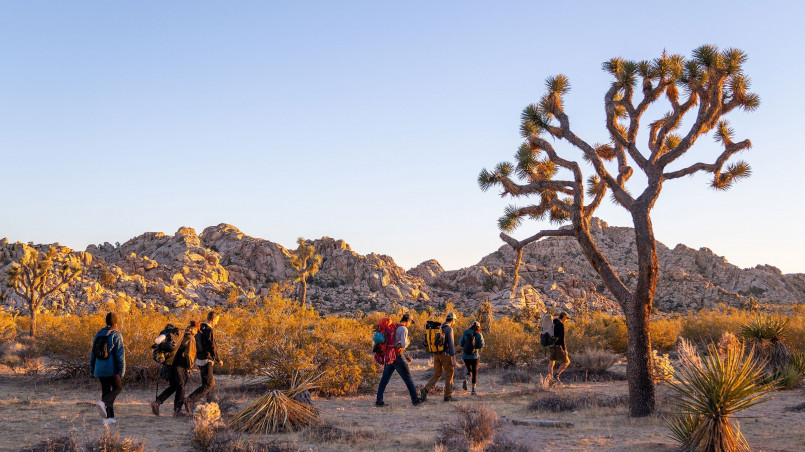
Shenandoah National Park
Protecting a section of the Blue Ridge Mountains in Virginia, Shenandoah offers over 500 miles of trails, including 101 miles of the Appalachian Trail, just 75 miles from Washington, DC.
The Old Rag Mountain circuit is the park's most popular and challenging day hike, featuring a rock scramble section and 360-degree views from the summit. For waterfall enthusiasts, the White Oak Canyon/Cedar Run loop showcases six beautiful waterfalls.
The Stony Man trail offers a more accessible 1.6-mile round trip to spectacular views from the park's second-highest peak.
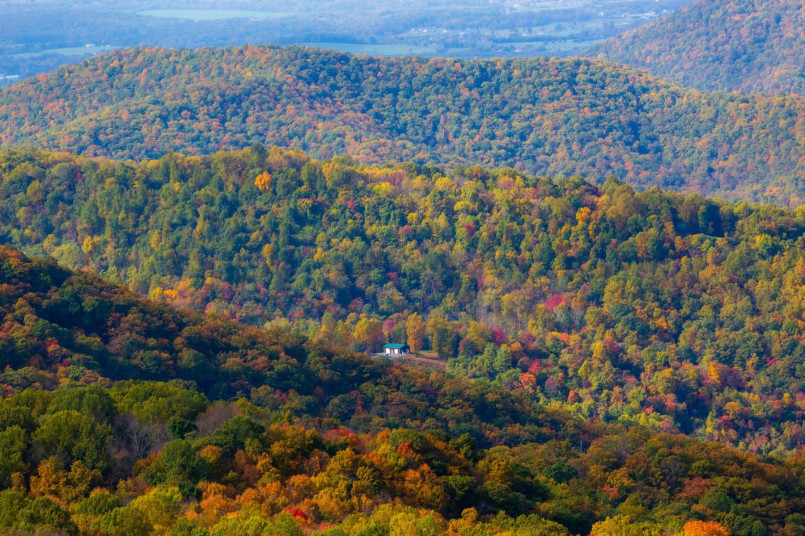
Crater Lake National Park
Home to the deepest lake in the United States, formed in the caldera of an ancient volcano, Crater Lake National Park in Oregon offers hiking with unparalleled blue water views and interesting volcanic landscapes.
The Cleetwood Cove Trail is the only trail providing access to the lake shore, descending 700 feet through several switchbacks. For panoramic views, the Garfield Peak Trail climbs from Rim Village to one of the highest points on the caldera rim.
The Watchman Peak Trail offers another excellent viewpoint option, with the added bonus of a historic fire lookout tower at the summit.
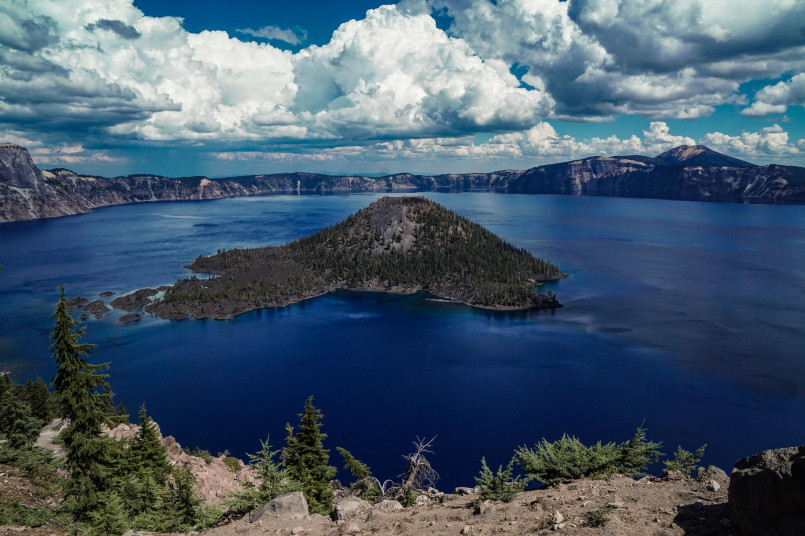
Planning Your Hiking Adventure
When planning a hiking trip to any national park, proper preparation is essential. Consider these important factors before hitting the trails:
Season and Weather: Research the best time to visit your chosen park. Many high-elevation parks have short summer seasons, while desert parks are best hiked in spring, fall, or winter. Always check current weather conditions and forecasts before heading out.
Permits: Some popular hikes require advance permits or reservations. For example, Half Dome cables in Yosemite, The Narrows top-down route in Zion, and many backcountry camping areas require permits that can fill up months in advance.
Safety: Always carry the Ten Essentials: navigation, sun protection, insulation (extra clothing), illumination (headlamp/flashlight), first-aid supplies, fire starter, repair kit/tools, nutrition, hydration, and emergency shelter. Let someone know your hiking plans and expected return time.
Leave No Trace: Follow Leave No Trace principles to preserve these special places for future generations. Stay on designated trails, pack out all trash, and respect wildlife by maintaining appropriate distances.
With proper planning and preparation, hiking in America's national parks offers some of the most rewarding outdoor experiences available anywhere in the world.
Frequently Asked Questions About 15 Best National Parks for Epic Hiking Adventures in 2024
Which national park has the most miles of hiking trails?
Yellowstone National Park has the most miles of hiking trails with over 1,000 miles of backcountry trails. However, Great Smoky Mountains National Park is close behind with approximately 850 miles of trails and is generally considered to have a more diverse trail system specifically for hiking.
Do I need permits to hike in national parks?
Day hiking on most trails doesn't require permits, but certain popular trails (like Half Dome in Yosemite) and almost all overnight backcountry trips require permits. These permits often have quotas and can be competitive, so it's best to research and apply well in advance, sometimes 6 months before your trip.
When is the best time to avoid crowds in popular national parks?
Generally, visiting on weekdays, during shoulder seasons (late spring or early fall), or at sunrise can help avoid crowds. For example, Zion is less crowded in winter, Yosemite is quieter in October, and summer crowds at Rocky Mountain National Park thin out after Labor Day when children return to school.
How should I prepare for wildlife encounters while hiking?
Research what wildlife is present in the park you're visiting. Carry bear spray in bear country (like Glacier and Yellowstone), make noise while hiking to avoid surprising animals, store food properly, maintain safe distances (at least 100 yards from bears and wolves, 25 yards from other wildlife), and never feed or approach wild animals.
Which national parks are best for beginner hikers?
Great Smoky Mountains, Acadia, and Shenandoah offer many gentle, well-marked trails suitable for beginners. Zion's Pa'rus Trail and Riverside Walk, Bryce Canyon's Rim Trail, and many of the short interpretive trails in most parks are also excellent choices for those new to hiking.
How much water should I carry when hiking in desert parks?
For desert parks like Joshua Tree, Grand Canyon, and Zion, carry at least one gallon (4 liters) of water per person per day of hiking, and potentially more during hot weather. Dehydration is a serious risk, and natural water sources are scarce and often unsafe to drink without treatment.
Are there accessible hiking trails in national parks for people with mobility limitations?
Yes, many national parks have accessible trails. Examples include Glacier Point in Yosemite, the Pa'rus Trail in Zion, Rim Trail sections at Grand Canyon, Bear Lake Loop in Rocky Mountain, and the Cades Cove Loop in Great Smoky Mountains. The National Park Service continues to improve accessibility across the system.

